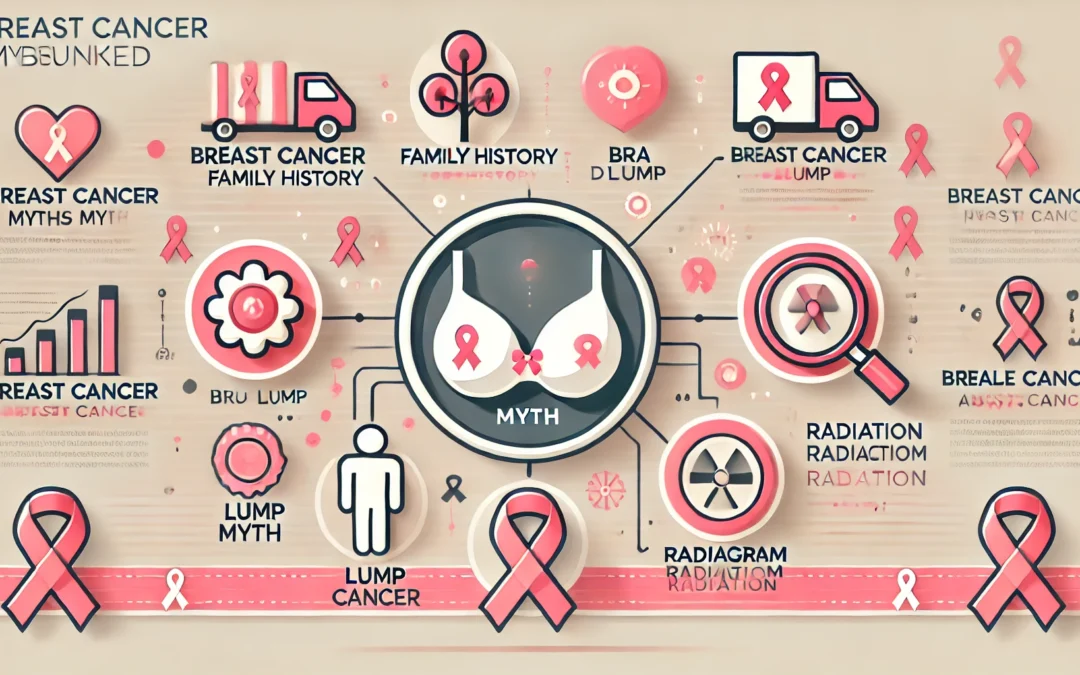Breast cancer is one of the most common cancers worldwide, and while awareness has increased significantly, many myths still surround it. These misconceptions can lead to fear, misinformation, and delayed action. Let’s tackle the top five breast cancer myths and uncover the truth.
Myth 1: Only Women with a Family History of Breast Cancer Are at Risk
Fact: While having a family history of breast cancer can increase your risk, the majority of women diagnosed with breast cancer have no family history at all. According to research, only 5-10% of breast cancer cases are hereditary. Lifestyle, environmental factors, and individual health play significant roles in breast cancer development. Regular screenings and self-examinations are essential for all women, regardless of family history.
Myth 2: Wearing a Bra Can Cause Breast Cancer
Fact: This myth has circulated for years, but there is no scientific evidence linking bras to breast cancer. The misconception often centers around underwire bras restricting lymph flow, but research shows that wearing a bra, regardless of type, does not affect your risk of developing breast cancer. Focus on evidence-based prevention methods like maintaining a healthy weight and avoiding smoking.
Myth 3: Breast Cancer Always Presents as a Lump
Fact: While lumps are a common symptom, breast cancer can manifest in various ways. Symptoms may include changes in breast size or shape, skin dimpling, nipple discharge, or redness and swelling. Some types of breast cancer, such as inflammatory breast cancer, may not involve a palpable lump at all. This is why it’s crucial to stay alert to any changes in your breasts and consult a doctor if you notice anything unusual.
Myth 4: Men Cannot Get Breast Cancer
Fact: Although breast cancer is much rarer in men, it is not exclusive to women. Men have breast tissue and can develop breast cancer. Approximately 1% of all breast cancer cases occur in men. Symptoms in men are similar to those in women, including lumps, nipple retraction, or discharge. Raising awareness about male breast cancer is vital for early detection.
Myth 5: Mammograms Expose You to Dangerous Radiation
Fact: Mammograms do involve low doses of radiation, but the amount is minimal and considered safe. The benefits of early detection far outweigh the risks associated with radiation exposure. Regular mammograms can detect breast cancer at an early stage, significantly improving treatment outcomes. Women over 40 or those at higher risk should discuss screening schedules with their healthcare provider.


